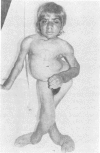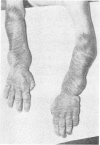Abstract
A bizarre syndrome has hitherto masqueraded as leprechaunism, and although it is a quite different disorder it has been used as the prototype of leprechaunism in some birth defects atlases. It is proposed that this condition is designated the Patterson syndrome and details of a second case are reported. The features of this connective tissue and neuroendocrine disorder include bronzed hyperpigmentation, cutis laxa of the hands and feet, bodily disproportion, severe mental retardation, and major bony deformities. Radiographs revealed a unique and gross generalised skeletal dysplasia, unlikely to be confused with any other disorder. This endocrine abnormality comprised hyperadrenocorticism, cushingoid features, and diabetes mellitus in the first case, and premature adrenarche in the second case. The pathogenesis and aetiology of the Patterson syndrome are unknown, although quantitative and qualitative abnormalities of mucopolysaccharide excretion were found in the second case.
Full text
PDF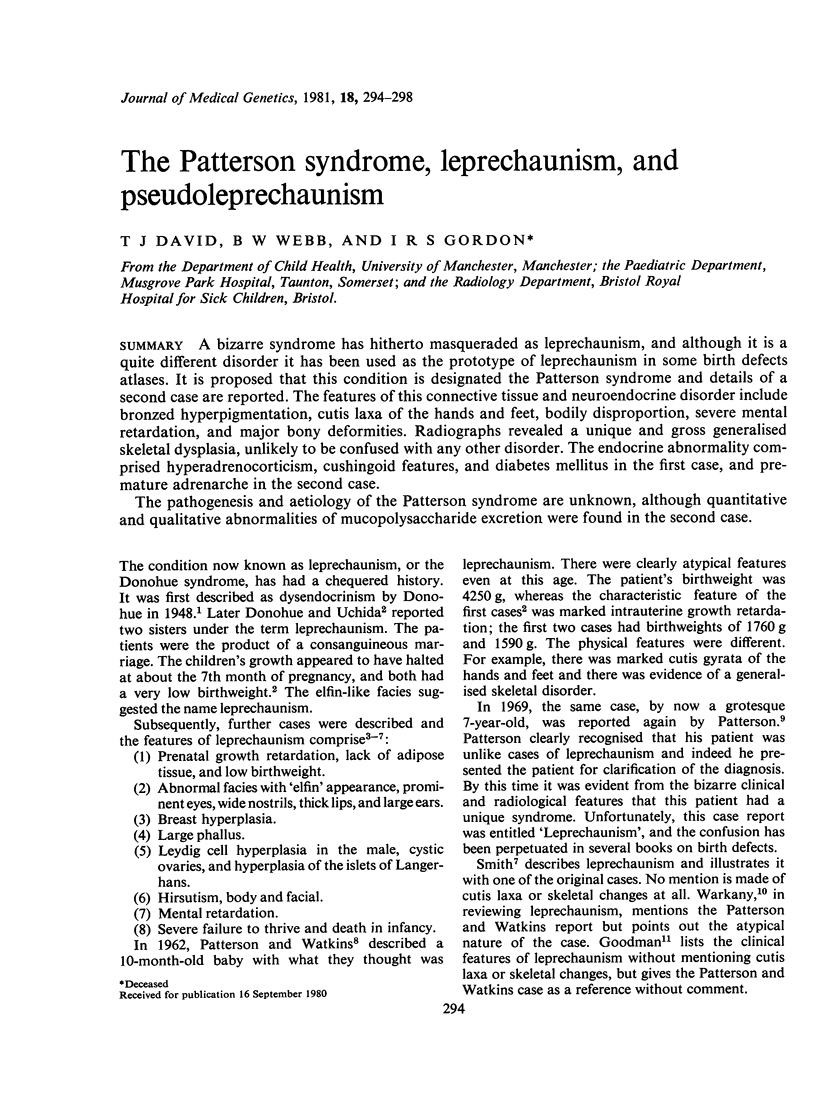
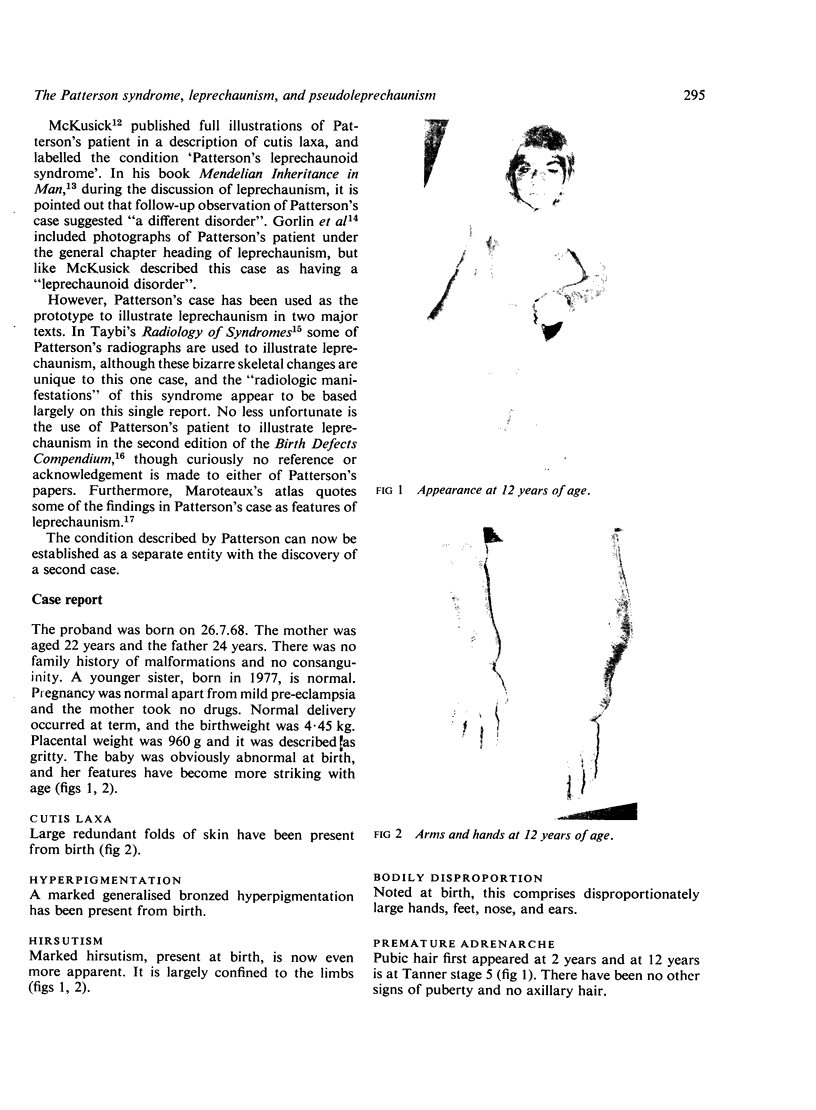
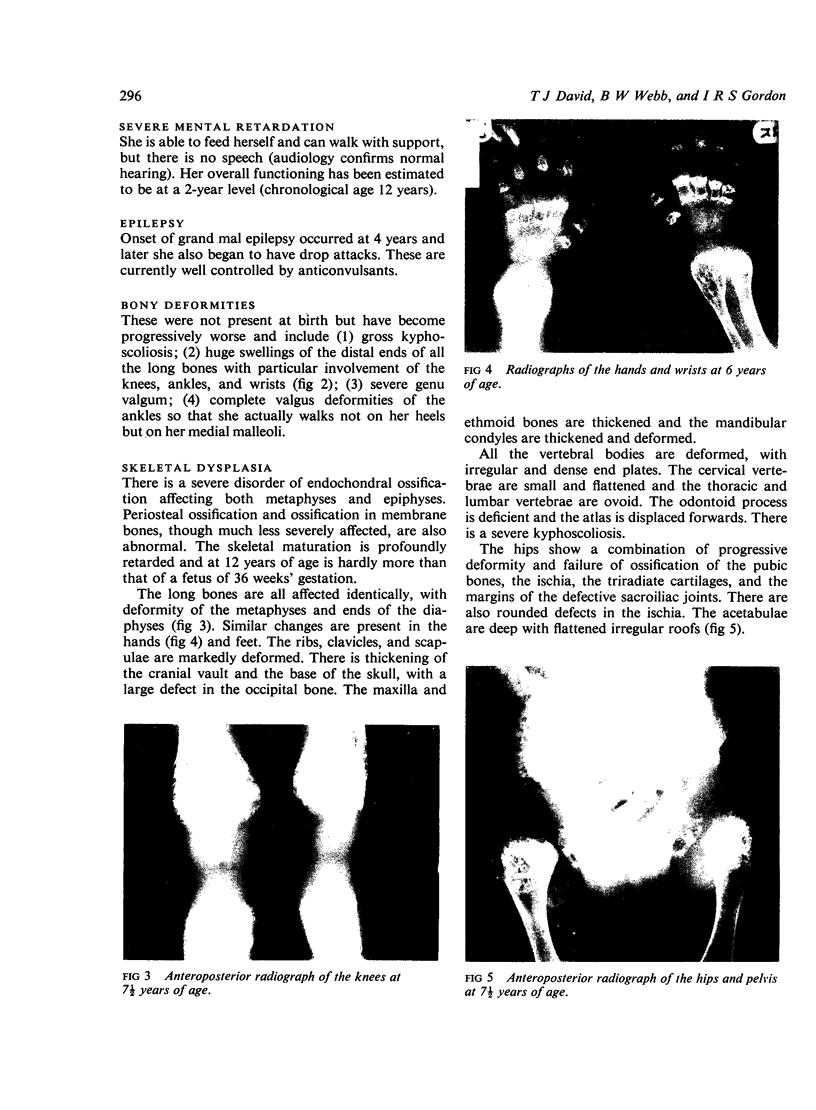
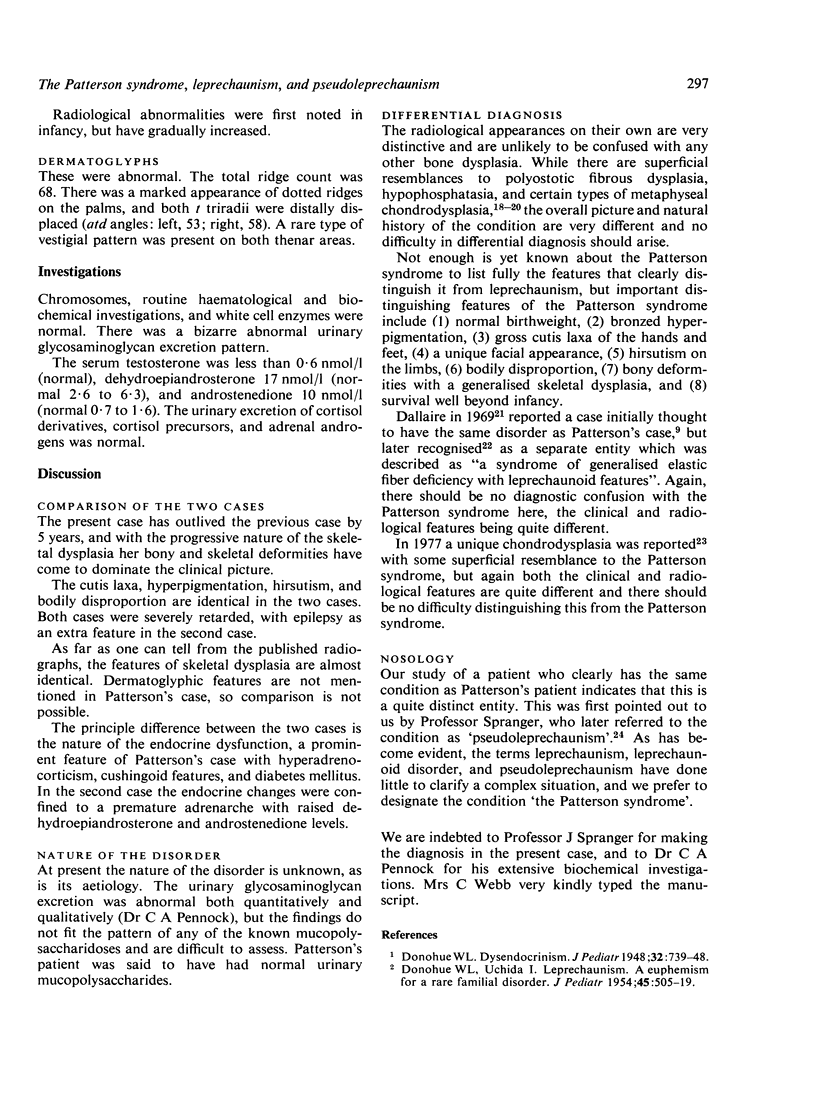
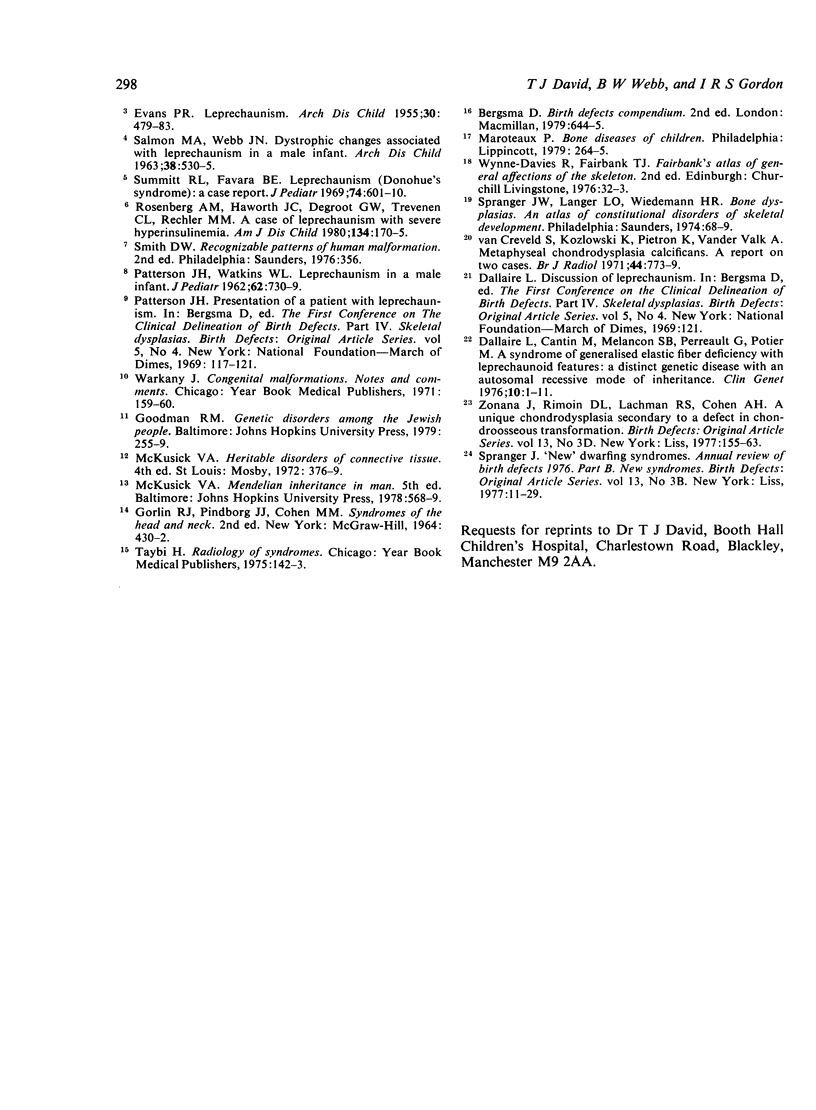
Images in this article
Selected References
These references are in PubMed. This may not be the complete list of references from this article.
- DONOHUE W. L., UCHIDA I. Leprechaunism: a euphemism for a rare familial disorder. J Pediatr. 1954 Nov;45(5):505–519. doi: 10.1016/s0022-3476(54)80113-2. [DOI] [PubMed] [Google Scholar]
- Dallaire L., Cantin M., Melançon S. B., Perreault G., Potier M. A syndrome of generalized elastic fiber deficiency with leprechaunoid features: a distinct genetic disease with an autosomal recessive mode of inheritance. Clin Genet. 1976 Jul;10(1):1–11. doi: 10.1111/j.1399-0004.1976.tb00001.x. [DOI] [PubMed] [Google Scholar]
- EVANS P. R. Leprechaunism. Arch Dis Child. 1955 Dec;30(154):479–483. doi: 10.1136/adc.30.154.479. [DOI] [PMC free article] [PubMed] [Google Scholar]
- PATTERSON J. H., WATKINS W. L. Leprechaunism in a male infant. J Pediatr. 1962 May;60:730–739. doi: 10.1016/s0022-3476(62)80100-0. [DOI] [PubMed] [Google Scholar]
- Rosenberg A. M., Haworth J. C., Degroot G. W., Trevenen C. L., Rechler M. M. A case of leprechaunism with severe hyperinsulinemia. Am J Dis Child. 1980 Feb;134(2):170–175. doi: 10.1001/archpedi.1980.02130140044014. [DOI] [PubMed] [Google Scholar]
- SALMON M. A., WEBB J. N. DYSTROPHIC CHANGES ASSOCIATED WITH LEPRECHAUNISM IN A MALE INFANT. Arch Dis Child. 1963 Oct;38:530–535. doi: 10.1136/adc.38.201.530. [DOI] [PMC free article] [PubMed] [Google Scholar]
- Spranger J. "New" dwarfing syndromes. Birth Defects Orig Artic Ser. 1977;13(3B):11–29. [PubMed] [Google Scholar]
- Summitt R. L., Favara B. E. Leprechaunism (Donohue's syndrome): a case report. J Pediatr. 1969 Apr;74(4):601–610. doi: 10.1016/s0022-3476(69)80044-2. [DOI] [PubMed] [Google Scholar]
- Zonana J., Rimoin D. L., Lachman R. S., Cohen A. H. A unique chondrodysplasia secondary to a defect in chondroosseous transformation. Birth Defects Orig Artic Ser. 1977;13(3D):155–163. [PubMed] [Google Scholar]
- van Creveld S., Kozlowski K., Pietron K., van der Valk A. Metaphyseal chondrodysplasia calcificans. A report on two cases. Br J Radiol. 1971 Oct;44(526):773–779. doi: 10.1259/0007-1285-44-526-773. [DOI] [PubMed] [Google Scholar]



